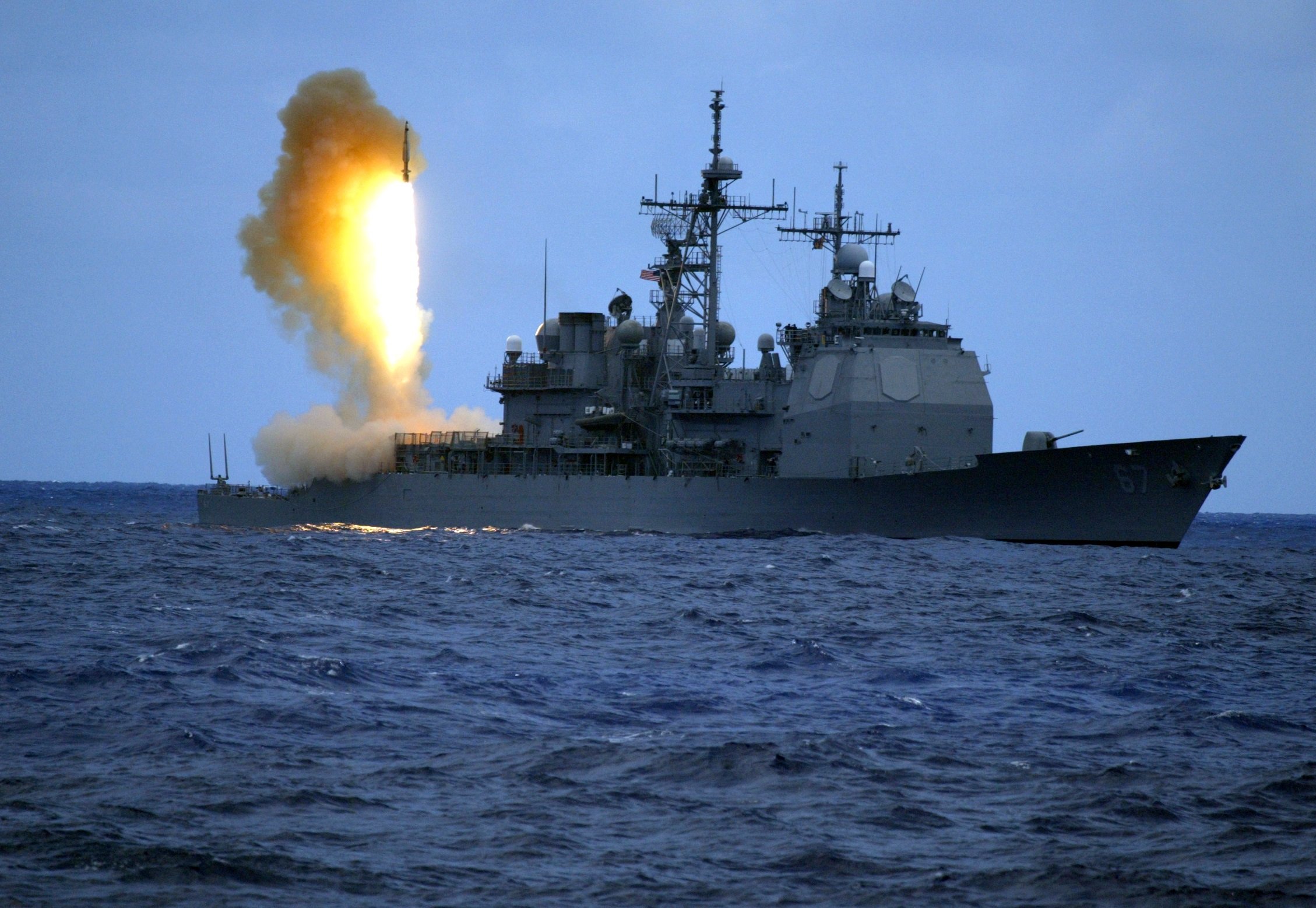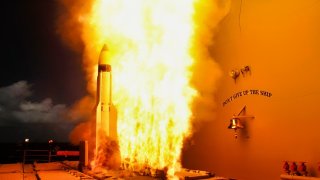The U.S. Navy Used its SM-3 Interceptor Missile for the First Time
The SM-3 has an operational range is up to 1,550 miles (2,500 km), while it can reach altitudes above 100 miles (100 km), which provides extensive defensive coverage against missile threats.
United States Navy warships fired the RIM-161 Standard Missile 3 (SM-3) ship-based surface-to-air interceptor missile for the first time in combat operation this past weekend to counter Iranian ballistic missiles fired at Israel. Between four and seven SM-3s were fired from the U.S. Navy's USS Arleigh Burke (DDG-51) and USS Carney (DDG-64), which were positioned in the Eastern Mediterranean.
The two Arleigh Burke-class guided-missile destroyers are reported to be equipped with versions of the Aegis combat system that were modified to track and target ballistic missiles. The SPY-1D radar on the destroyers cued the SM-3 to attack the ballistic missile, while the SM-3 transported a kill vehicle outside the atmosphere to intercept a ballistic missile near the height of its path from its launch point before it reenters the atmosphere to hit its target, USNI News reported.
The two destroyers had been placed off the coast of Israel as part of the defensive measures against an Iranian strike in retaliation for an Israeli attack on an Iranian consulate in Damascus, Syria.
"We've been firing SM-2s, we've been firing SM-6s, and just over the weekend, SM-3s, to actually counter the ballistic missile threat that's come from Iran," Secretary of the Navy Carlos Del Toro said at a Senate Appropriations Subcommittee on Defense hearing on Tuesday, the first public acknowledgment that the missiles had been used over the weekend.
Lots of Targets
In total, more than 300 Iranian drones and missiles were launched against Israel on Saturday evening and early Sunday morning. According to the Israel Defense Force (IDF) estimates, Iran launched 120 ballistic missiles, 30 cruise missiles, and 170 unmanned aerial vehicles (UAS) were launched from various sites, including from inside Iran, Iraq, and Yemen.
Of those, around 99 percent were intercepted and destroyed – and most of the intercepts occurred outside of Israel's airspace. It was estimated that explosives fired at the United States Middle Eastern ally amounted to around 60 tons.

However, the exact types of ballistic and cruise missiles that were fired at Israel are not clear, but missile analyst Chris Carlson told USNI News that the fact the U.S. Navy employed the SM-3 suggests that Tehran may have launched some media-range missiles that had a range of up to 1,800 miles.
The SM-3 in the Crosshairs
The SM-3 was developed as an anti-ballistic missile to intercept short- to intermediate-range ballistic missiles, and it operates as part of the Aegis Ballistic Missile Defense System. It was first deployed on U.S. Navy cruisers and destroyers in 2004, but this marks its first use against enemy ballistic missiles.
It can be launched from warships equipped with the Aegis combat system, while it is also compatible with Aegis Ashore sites. It operates in the mid-course phase, using a kinetic warhead to destroy targets through direct impact, a method known as "hit-to-kill," according to NavyRecognition.com. The SM-3 has received several upgrades, with the Block IIA variant capable of engaging ICBMs.
The SM-3 has an operational range is up to 1,550 miles (2,500 km), while it can reach altitudes above 100 miles (100 km), which provides extensive defensive coverage against missile threats.
Author Experience and Expertise: Peter Suciu
Peter Suciu is a Michigan-based writer. He has contributed to more than four dozen magazines, newspapers, and websites with over 3,200 published pieces over a twenty-year career in journalism. He regularly writes about military hardware, firearms history, cybersecurity, politics, and international affairs. Peter is also a Contributing Writer for Forbes and Clearance Jobs. You can follow him on Twitter: @PeterSuciu.
You can email the author: [email protected].


